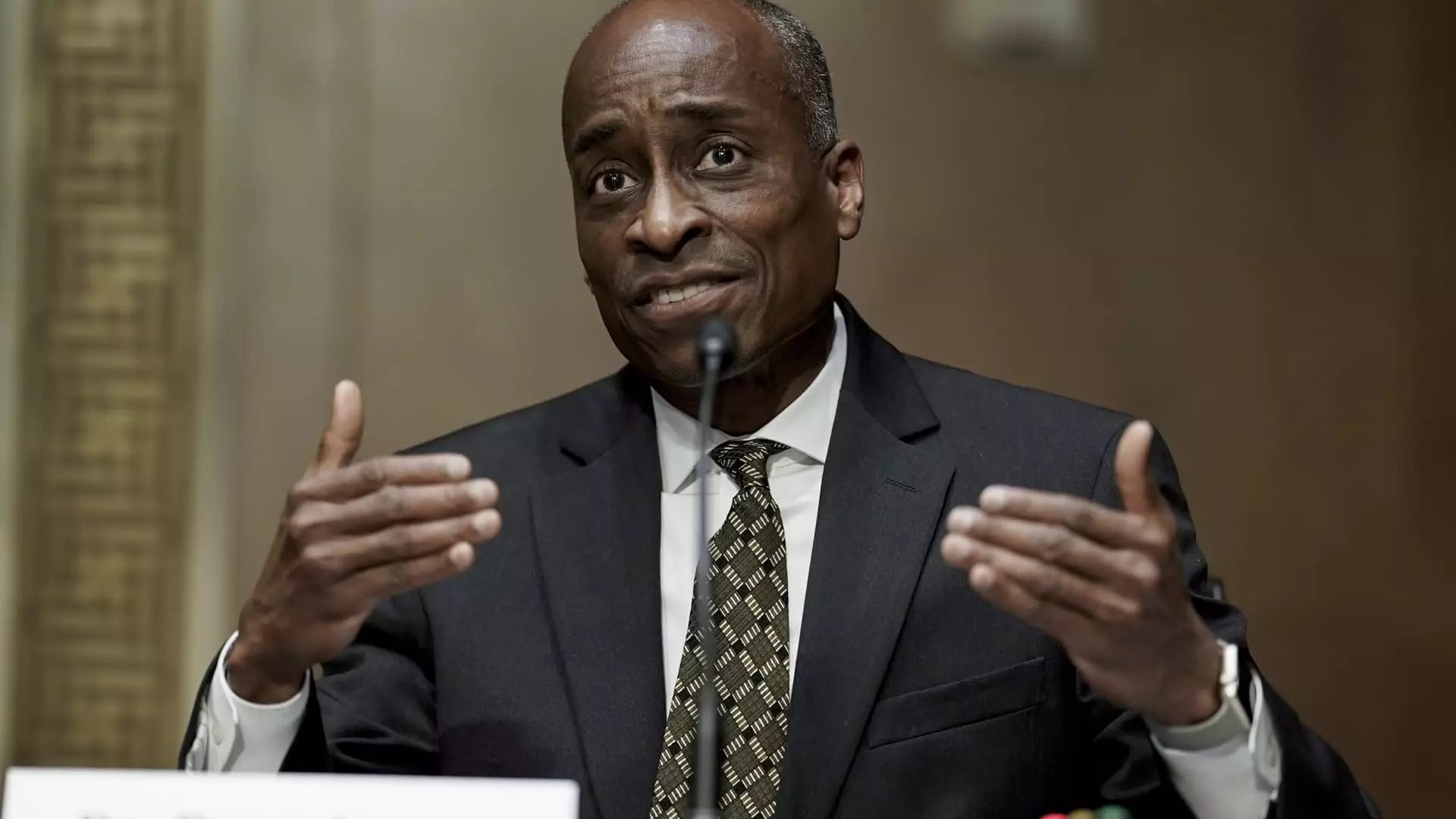Economic stability has always been a cornerstone of national policy, with central banks worldwide playing pivotal roles in shaping financial landscapes. Recently, Federal Reserve Vice Chair Philip Jefferson emphasized the intricacies of the current economic environment, highlighting both resilience and uncertainty within the U.S. economy. His statements reflect a broader sentiment among economic policymakers as they navigate a multifaceted landscape marked by inflation dynamics and labor market fluctuations.
Despite acknowledging the economy’s robustness, Jefferson pointed out the challenges posed by inflation, suggesting that while inflation rates have shown signs of easing, they remain above the Federal Reserve’s targeted goal of 2%. This overarching theme of gradual recovery and cautious optimism has become a hallmark of the Fed’s recent communications, reinforcing the need for a measured approach in adjusting interest rates.
In his recent address at Lafayette College, Jefferson urged a carefully measured response to potential adjustments in interest rates, advocating for a deliberate strategy in the face of ongoing shifts in economic policy. His assertion that the Federal Open Market Committee (FOMC) should “move slowly” is rooted in the belief that current strength in the economy and labor market does not necessitate hasty actions.
This perspective resonates within the broader context of the Federal Reserve’s decision-making process. After a string of interest rate reductions totaling one percentage point over the preceding three meetings, the FOMC’s recent choice to hold the policy rate steady between 4.25% and 4.5% underscores a commitment to cautious optimism. Jefferson’s remarks echo an underlying principle of economic governance: the need for policy adjustments to align with real-time economic indicators rather than political pressures.
Adding layers of complexity to this already intricate economic framework are the uncertain outcomes of governmental policies, particularly in relation to trade tariffs. Jefferson’s commentary regarding the ongoing negotiations between the U.S. and major trading partners introduces a vital discourse surrounding international economics. While President Trump has temporarily eased tariffs on Canadian and Mexican goods, tensions with China continue to loom large.
As Jefferson noted, “There is always a great deal of uncertainty around any economic forecast,” which encapsulates the precarious nature of economic forecasting amidst evolving trade relations. This uncertainty amplifies the risk factors associated with economic growth, requiring policymakers to maintain a flexible approach that can adapt to volatile international conditions.
The personal consumption expenditures price index, a key inflation metric utilized by the Fed, has trended lower in recent months. Despite this, inflation remains above the central bank’s 2% goal, leading Jefferson to approach future projections with caution. His acknowledgement of a “high degree of uncertainty” regarding inflation trajectories serves as a reminder of the complexities inherent in economic forecasting.
Jefferson’s comments also revealed potential pathways for future monetary policy: maintaining restrictive monetary policies for an extended period if inflation remains stubbornly high, or perhaps easing restrictions should the labor market exhibit signs of vulnerability. This adaptability in policy formulation underscores the Fed’s commitment to balancing economic growth with price stability.
The current discourse led by Vice Chair Philip Jefferson illustrates the delicate balancing act central banks must perform in navigating economic uncertainties. With inflation still moderating and the labor market showing signs of resilience, the Federal Reserve’s cautious approach appears justified. This strategy not only reflects a recognition of prevailing economic conditions but also aligns with the broader objective of ensuring sustainable growth while mitigating risks.
As the Federal Reserve continues to analyze evolving economic indicators, the emphasis on measured responses will likely persist. The interplay of domestic economic indicators and international trade dynamics will remain critical in shaping the Fed’s future decisions, emphasizing the importance of flexibility and foresight in monetary policy. In this complex landscape, a prudent approach remains essential for fostering long-term economic stability.


Leave a Reply